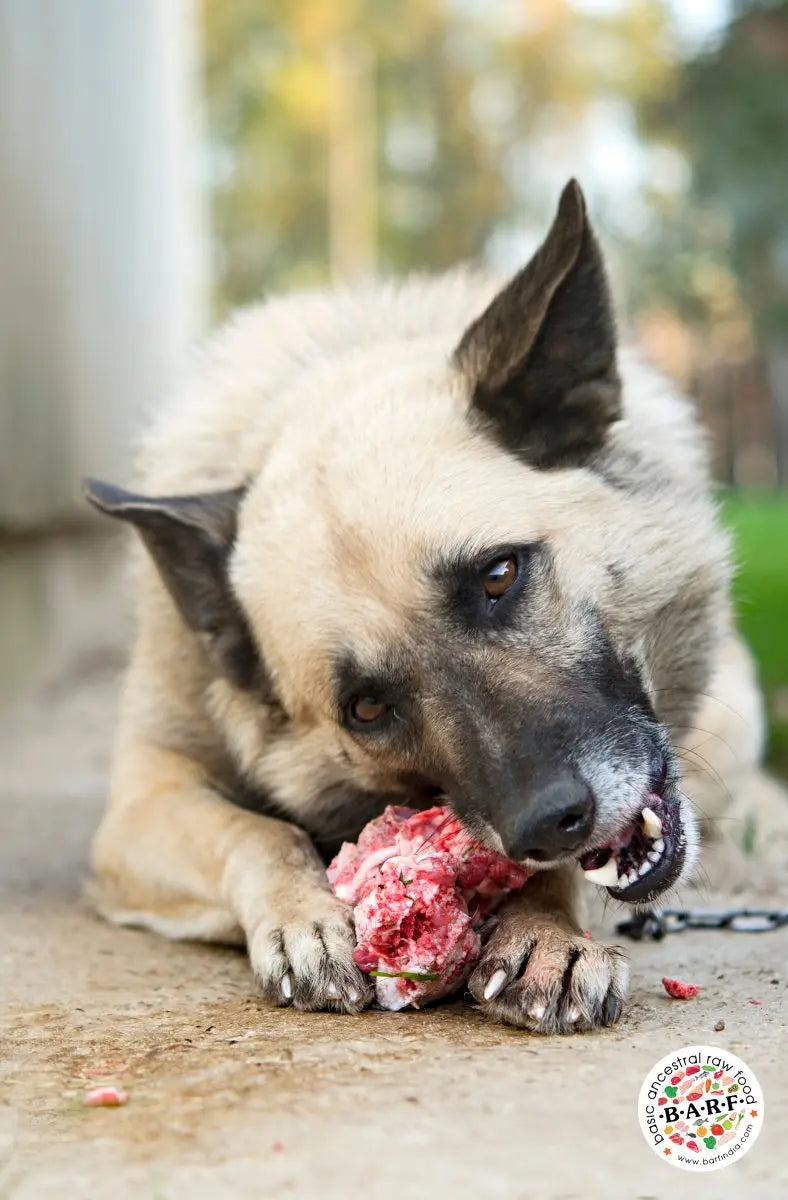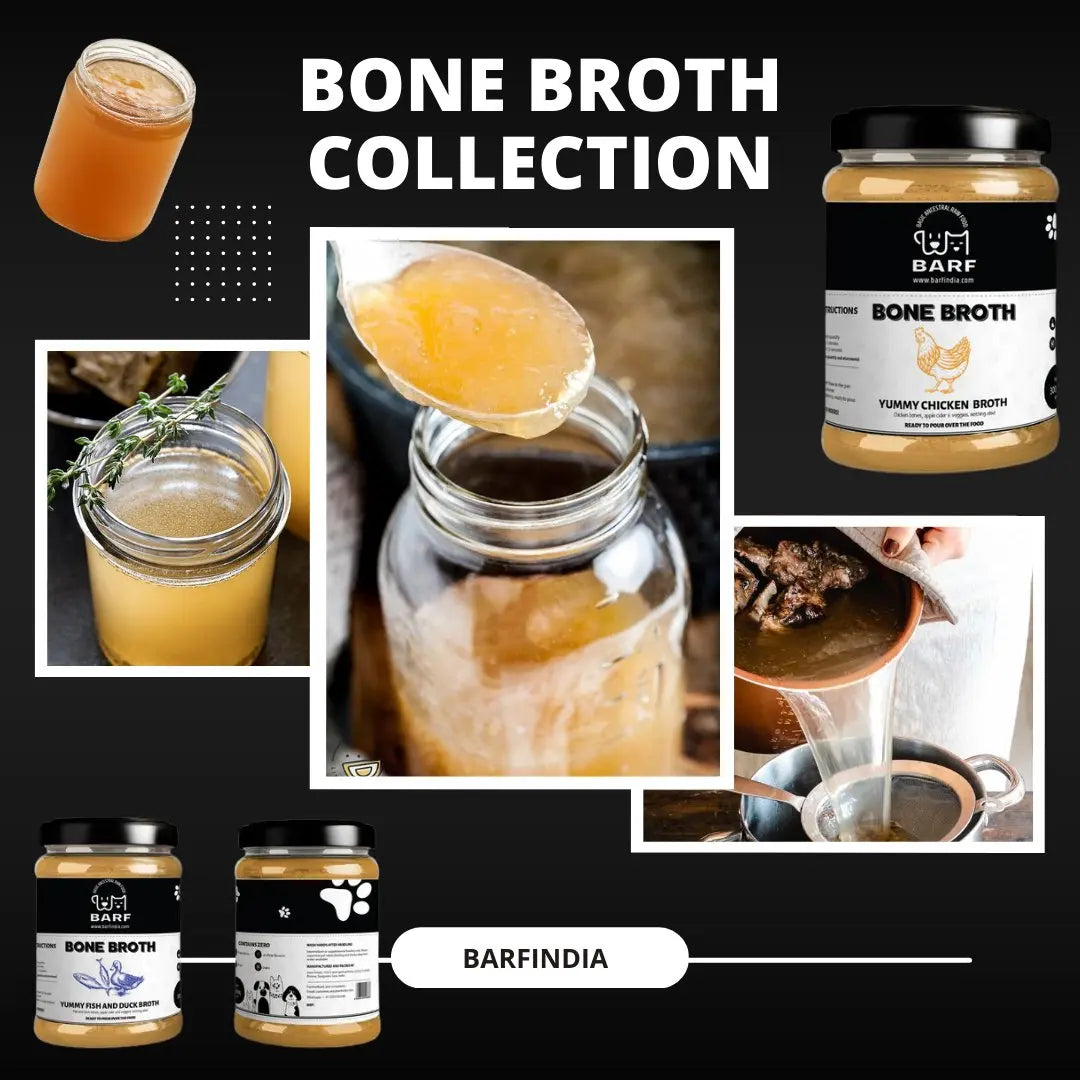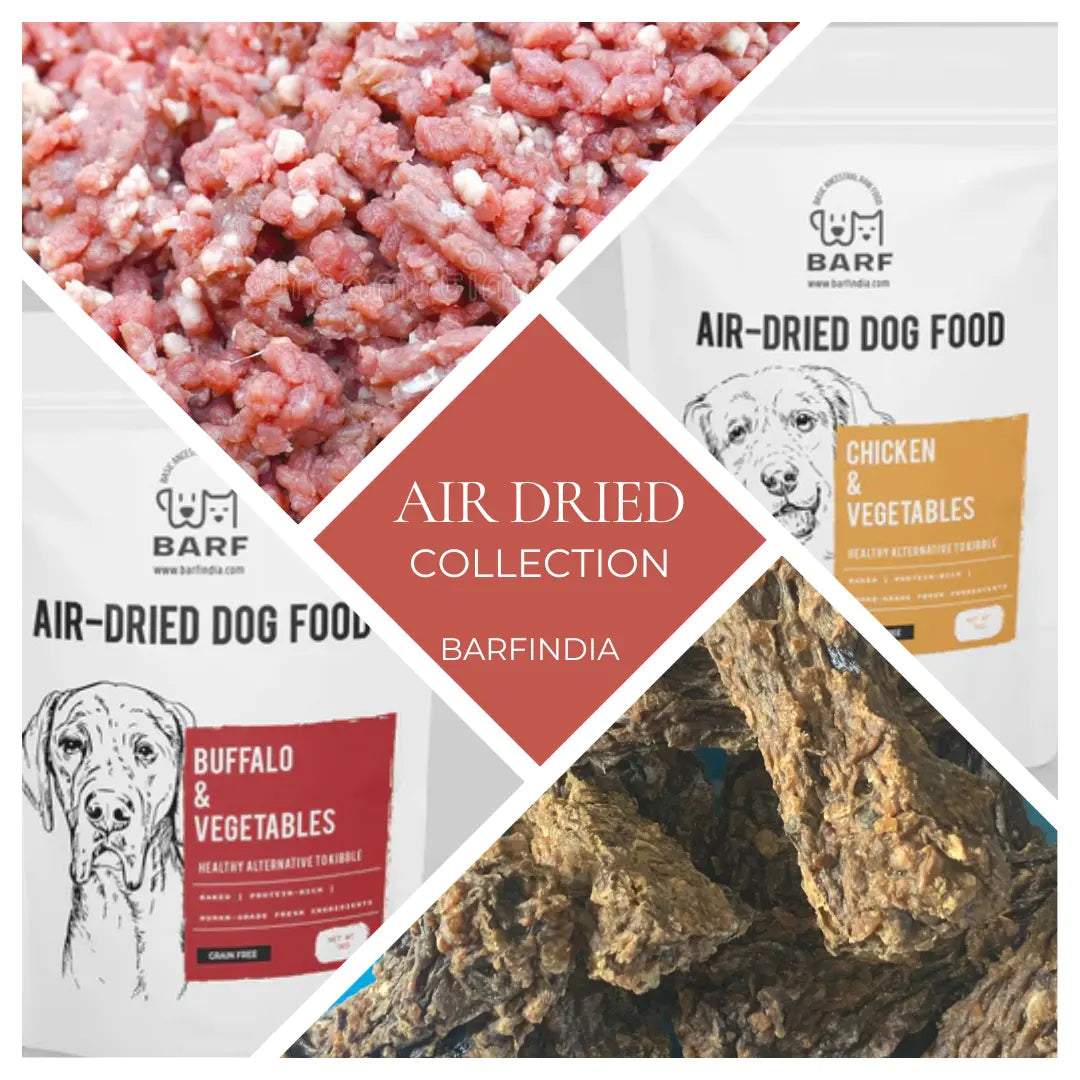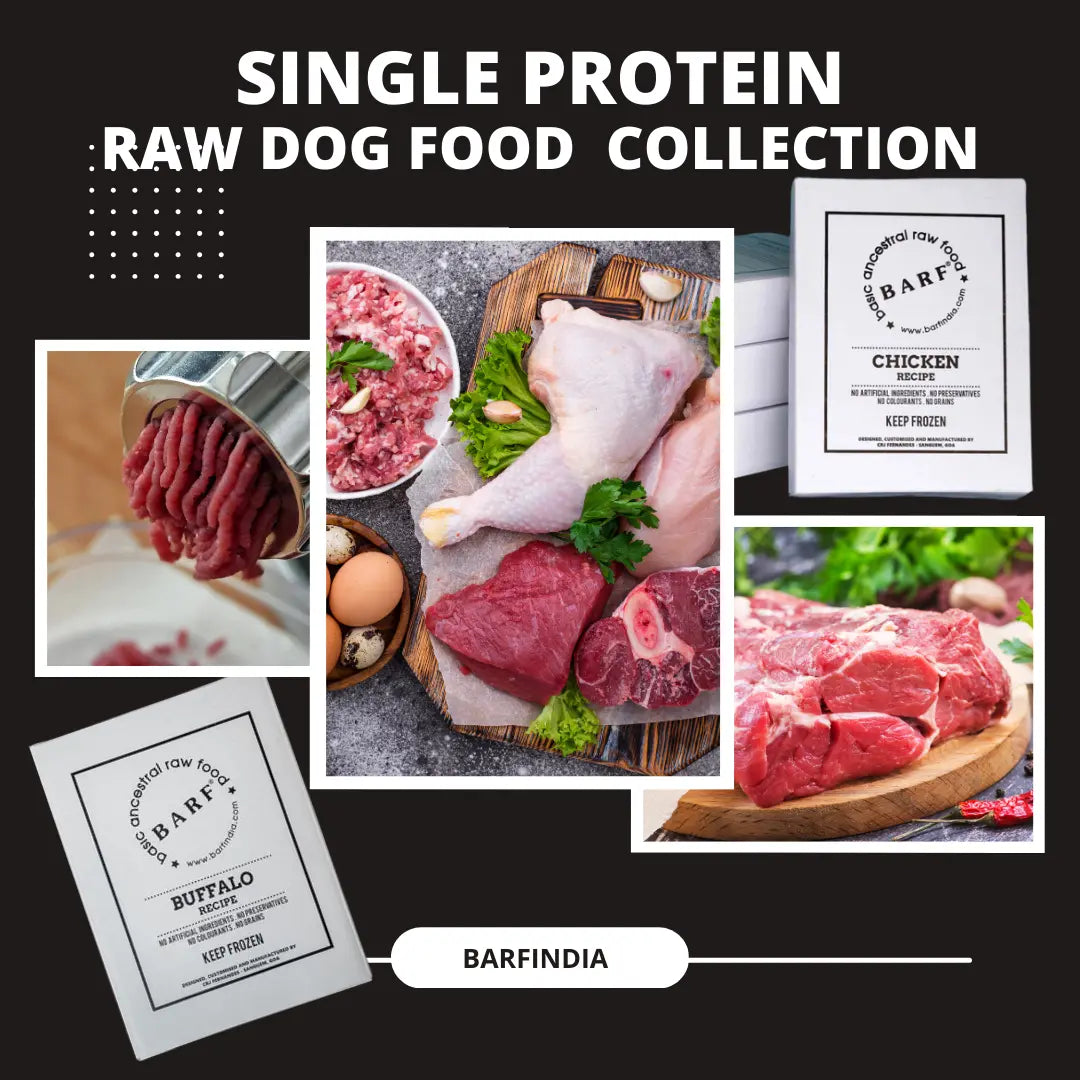
Oral hygiene and raw food for dogs?
B.A.R.F. India AdministratorRaw Food for Dogs: A Natural Path to Better Oral Hygiene
When it comes to maintaining healthy teeth and gums, raw food for dogs may be one of the most powerful tools in a pet parent's arsenal. While traditional pet care advice has long promoted kibble for dental health, new evidence and ancestral feeding models point to a different truth—raw-fed dogs consistently have cleaner teeth, healthier gums, and fresher breath than their kibble-fed counterparts.
Raw Food for Dogs: Why It’s Better Than Kibble for Oral Health
You’ve probably heard the claim that dry kibble scrapes away plaque and food particles from your dog’s teeth. But let’s challenge that idea. After munching on chips or a dry biscuit, do your own teeth feel clean? Or do they feel sticky and filled with residue? Now think of biting into a crisp apple—it clears away leftovers and leaves your mouth feeling fresh.
The same logic applies to dogs. Unlike dry kibble, raw food for dogs is moist and packed with natural enzymes. These enzymes aid digestion and also help break down bio-film—the slimy coating that bacteria create as a protective shield on your dog’s teeth. Bio-film is a major culprit behind plaque, tartar, bad breath, and even gum infections. And it’s tough to remove—even with brushing.
The enzymes in raw food act like nature’s toothbrush, gently dissolving that bio-film and reducing the bacterial load in your dog’s mouth. In addition, raw food boosts immunity and promotes healthier saliva, creating a natural defense against oral disease.
Raw Food for Dogs: Raw Bones Are the Secret to Clean Teeth
To truly unlock the dental benefits of a raw food diet, you’ll need to go beyond meat and organs—raw bones are the secret weapon. Not only are they nutrient-dense, but they also provide natural chewing action that physically scrapes away plaque and massages the gums.
Here’s what raw bones offer:
-
Enzymes and nutrients to dissolve bio-film and promote oral health
-
Natural chewing action to mechanically clean the teeth
-
Muscle meat and cartilage that nourish your pet’s body and dental structure
-
Mental stimulation to satisfy your dog’s natural instinct to chew
Just make sure the bones are raw, not cooked—cooked bones become brittle and dangerous, while raw bones remain soft, pliable, and easy to digest.
Raw Food for Dogs: How to Start With Raw Bones for Oral Care
Here’s how to safely introduce raw bones into your dog’s routine for improved dental hygiene:
-
Feed 2–3 raw bones per week
-
Choose bones appropriate to your dog’s size (never feed small bones to large dogs)
-
Supervise your pet while chewing
-
Offer bones in easy-to-clean areas—bathtubs, bathrooms, or outdoors
Examples of safe bones include:
-
Chicken wings or necks for small breeds
-
Lamb ribs or beef marrow bones for medium to large dogs
-
Always remove sharp fragments and monitor for excessive wear or swallowing
And yes—cats can benefit too. Some cats enjoy small poultry bones, which help reduce plaque and support better gum health.
Raw Food for Dogs: Why Cooked Bones Are a No-Go
Never substitute raw bones with cooked ones. Cooking changes the structure of the bone, making it dry, brittle, and prone to splintering. These sharp splinters can injure your pet’s digestive tract, puncture organs, and cause life-threatening blockages.
Cooked bones are also stripped of moisture and natural enzymes—so they offer no oral benefits and can be dangerous. Stick to raw. Always.
Conclusion: Smile Brighter with Raw Food for Dogs
Switching to raw food for dogs isn't just about better nutrition—it's about whole-body wellness, starting with the mouth. From enzyme-rich meat to naturally abrasive raw bones, a raw diet supports fresher breath, cleaner teeth, stronger gums, and fewer vet visits.
Ready to see that tail wag with a gleaming smile? Start with a balanced raw diet and the right bones—and give your pet the oral care nature intended.



